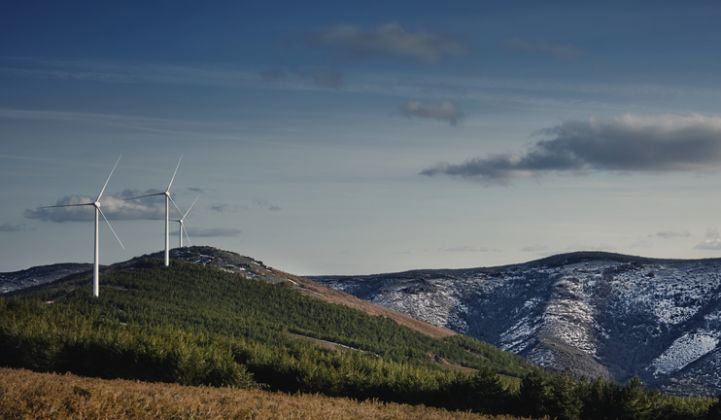General Electric is buying one of the world’s largest wind turbine blade manufacturers, LM Wind Power, for $1.65 billion.
The acquisition will allow GE to bring wind turbine blade design in-house to drive down cost faster than it would have with LM Wind as an independent supplier, according to Jérôme Pécresse, president and CEO of GE Renewable Energy.
GE is buying LM Wind from London-based private equity firm Doughty Hanson for 8.3 times EBITA. LM Wind will operate as a standalone subsidiary. The Danish blade company currently has blade factories in 13 countries including Brazil, Canada, China, Denmark, India, Poland, Spain and the U.S.
LM Wind has long been a supplier to GE, but there is increasing global competition for onshore and offshore wind, both of which are growing markets, and driving down cost and pushing for further innovation in design is paramount.
GE has positioned its renewable energy division as a “$9 billion startup” as it tries to innovate at the speed of a startup, but with the balance sheet of an established global powerhouse.
Although onshore wind is cost-competitive with fossil fuels and even with hydropower in some parts of the world, a recent study from Lawrence Berkeley National Laboratory found wind power could see another 25 percent cost decline by 2030.
Experts expect cost advantages in wind to come through lower capital costs, but also through higher capacity factors, longer project life and operational efficiencies. That will mean better analytics and bigger turbines.
Pécresse noted that blades are the single largest cost component of the total turbine, and it is the blade that drives much of the overall performance of the turbine, so it makes sense to tightly integrate the blade design with the rest of the turbine. That involves everything from how to manufacture and ship the blades that are getting bigger and bigger, to better placement of sensors to enhance the analytics that can further a turbine’s performance. “It’s all part of the value chain,” he added.
Another advantage is that both companies have global footprints that can be leveraged to grow the business in a more holistic way. “With our combined global footprint, we can build flexible solutions for customers around the world,” said Pécresse.
GE, for instance, would like to maintain a strong presence in China, where LM Wind Power already supplies various turbine manufacturers and has an office and three factories. Bloomberg New Energy Finance reported that GE lost wind market share to Goldwind and Vestas in 2015.
The acquisition is expected to close in the first half of 2017.
Check out the stories below for more news on how wind is reaching grid parity globally:



